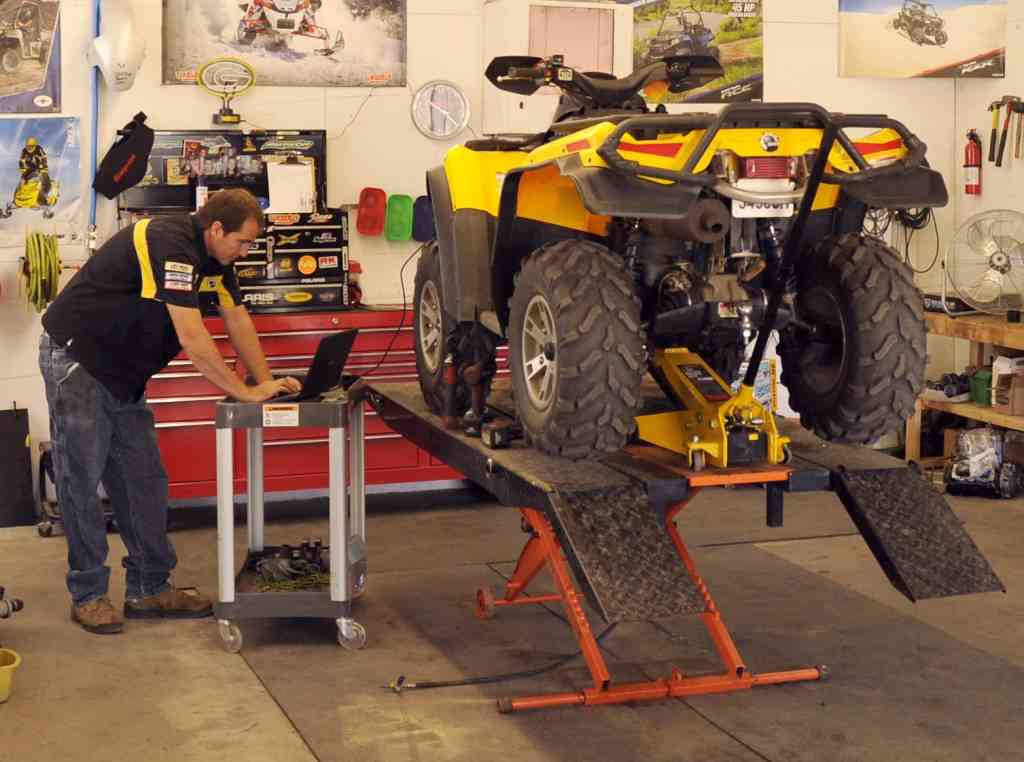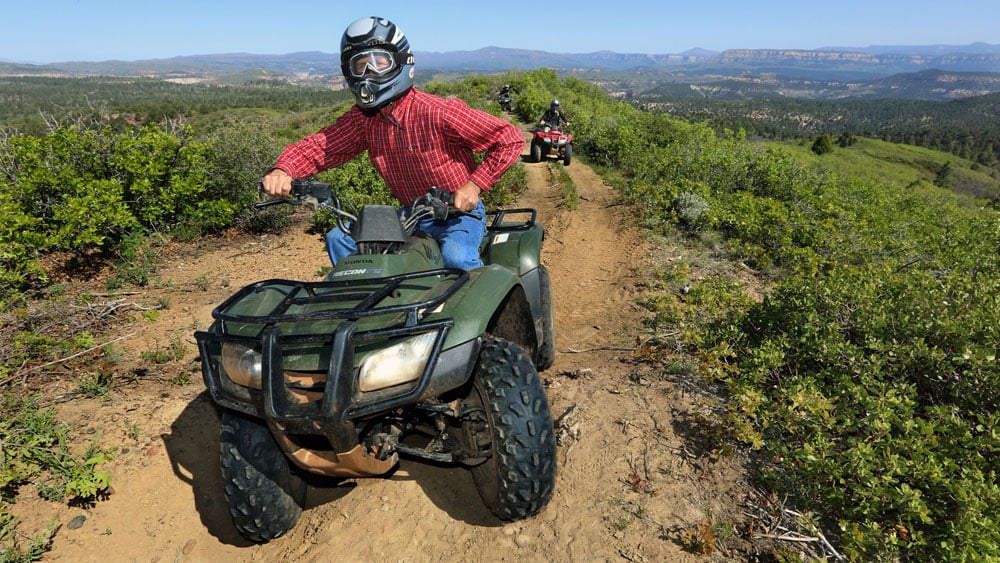Dominate the Wild: Your Ultimate ATV Expedition Waits For
Dominate the Wild: Your Ultimate ATV Expedition Waits For
Blog Article
ATV Riding Strategies: Understanding the Art of Off-Roading

Body Positioning
To effectively navigate through difficult off-road terrain, it is vital for ATV motorcyclists to continually preserve appropriate body positioning. Preserving the proper body placement while riding an ATV not just improves control and stability yet also guarantees the cyclist's safety. By adopting the correct body positioning strategies, cyclists can properly disperse their weight, boost their balance, and lessen the danger of crashes or injuries.
Putting the feet on the foot pegs allows the cyclist to maintain security and control over the ATV. The cyclist's knees ought to be a little bent, supplying a small suspension to maintain and absorb shocks balance.
Moreover, the rider's eyes must always be concentrated in advance, scanning the surface and expecting any obstacles or modifications in the path. By keeping an ahead stare, cyclists can make instant decisions and respond appropriately to challenging surface.
Throttle Control
Structure upon the importance of proper body placing for ATV bikers, grasping throttle control is a vital skill that allows cyclists to efficiently navigate through different off-road terrains. Throttle control describes the ability to manage the amount of power supplied to the ATV's engine. By comprehending exactly how to adjust the throttle, cyclists can guarantee a smooth and controlled velocity, allowing them to navigate challenges with accuracy.
One of the essential facets of throttle control is learning to regulate the throttle smoothly. Sudden or jerky movements can create the ATV to lose traction or come to be unpredictable, making it tough to maintain control. Rather, cyclists must intend for deliberate and progressive throttle inputs, particularly when passing through difficult terrains. This strategy permits the ATV to preserve a stable rate and gives far better grip, lowering the danger of crashes.
Along with smooth modulation, bikers must also learn how to balance the throttle with various other riding techniques, such as body positioning and stopping. When climbing high hills, bikers need to apply adequate throttle to maintain energy without overpowering the ATV or triggering wheel spin. When coming down high inclines, motorcyclists ought to utilize the throttle in mix with correct body positioning and braking to preserve control and protect against the ATV from gliding or tipping over.

Braking Techniques
A crucial aspect of ATV riding methods is understanding reliable braking methods. It is important to keep in mind that extreme braking with only the front brake can create the ATV to pitch ahead, potentially leading to loss of control or also flipping over. By mastering these braking strategies, you can enhance your ATV riding abilities and guarantee a safe and satisfying off-roading experience.
Cornering Strategies
One crucial facet of grasping ATV riding techniques is recognizing efficient cornering methods. Collaring on an ATV can be difficult, but with the right strategies, motorcyclists can browse turns securely and effectively. The key to successful cornering is to keep control of the ATV while optimizing traction and minimizing the danger of tipping over.
To implement a proper cornering method, motorcyclists must come close to the turn at an ideal rate, ensuring they are not going too rapid or also slow-moving. It is essential to change Find Out More the body weight in the direction of the within of the turn, leaning into it to preserve equilibrium and stability. This assists for the centrifugal pressure and maintains the ATV upright.
Additionally, bikers ought to maintain their eyes concentrated on the leave factor of the turn as opposed to the instant course ahead (ATV). This permits smoother and more exact steering, as it aids the motorcyclist prepare for any kind of challenges or adjustments in terrain
Moreover, appropriate throttle control plays a considerable role in cornering. Cyclists have to regulate the throttle efficiently, staying clear of sudden velocities or slowdowns, which can cause loss of control.
Uphill and Downhill Riding
When browsing off-road surface, ATV motorcyclists need to understand the methods for uphill and downhill riding to keep control and make sure safety. Uphill riding requires a combination of balance, throttle control, and weight distribution. As cyclists ascend high slopes, they ought to lean forward to move their weight towards the front of the ATV, which boosts traction on the front wheels and avoids the car from turning backward. ATV. Furthermore, keeping a regular throttle and avoiding sudden acceleration or slowdown assists to avoid the ATV from shedding momentum or getting stuck. Downhill riding, on the other hand, calls for motorcyclists to lean back and change their weight in the direction of the back of the ATV. This aids to keep stability and protect against the automobile from turning ahead. It is important to use the brakes moderately and use them progressively to prevent securing the wheels and losing control. Additionally, riders must select the path with the least challenges, as navigating downhill can be a lot more difficult because of the raised rate and reduced traction. By grasping the techniques for uphill and downhill riding, ATV bikers can confidently take on different off-road surfaces and enjoy a thrilling and secure journey.
Conclusion
Finally, understanding the art of ATV riding needs a combination of body positioning, throttle control, stopping techniques, and reliable cornering. Uphill and downhill riding likewise require certain skills to browse securely. By executing these methods, riders can boost their off-roading experience and boost their total control and security on the ATV.
ATV Riding Techniques: Understanding the Art of Off-Roading is a detailed guide that delves right into the intricacies of mastering the skills needed for off-road ATV riding. Whether you are a novice or a skilled motorcyclist, ATV Riding Techniques: Mastering the Art of Off-Roading supplies indispensable suggestions to assist elevate your off-road ATV riding skills to the next level.

Report this page